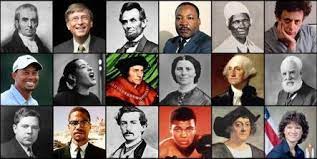Historical figures are often idolized for their accomplishments and contributions to society. From Christopher Columbus, who is credited with discovering America, to Martin Luther King Jr., who fought for civil rights, these individuals have become symbols of heroism and inspiration. However, as we look closer at their lives and actions, we realize that these figures are not as perfect as they may seem.
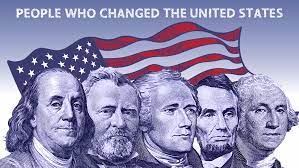
Despite their idolization, many historical figures have a dark side that is often overlooked. In this article, we will examine the duality of idolized historical figures, exploring both their good deeds and accomplishments as well as their negative actions and atrocities.
We will examine the importance of acknowledging and celebrating the positive contributions of these figures while also understanding and acknowledging their negative aspects.
This article aims to present a more complete and nuanced understanding of historical figures, who are often reduced to one-dimensional heroes in history.
The Concept of Idolized Historical Figures
Idolized historical figures are individuals from the past who are held in high esteem and admired for their accomplishments or contributions to society.
They are often considered heroes and role models and their names and deeds are celebrated and remembered through monuments, statues, and other forms of commemoration.
Examples of idolized historical figures include figures such as George Washington, Abraham Lincoln, Martin Luther King Jr., and Mahatma Gandhi.
These figures are often seen as symbols of leadership, courage, and integrity, and their actions and words continue to inspire people today.
It is worth mentioning that who is idolized and why is often influenced by the culture, society, and time period in which they lived.
For example, figures who were celebrated and idolized in one historical period may be viewed differently in another. Additionally, certain groups of people may view historical figures differently based on their own experiences and perspectives.
READ ALSO:
Anthony Joshua, Oleksandr Usyk Retouching History
Potter and Ten Hag condemn homophobic chanting
Idolizing historical figures is not necessarily a bad thing as it can help to learn from their deeds and achievements, but it is important to be aware of the negative aspects and the context of their actions.
Despite their idolization, many historical figures have a dark side that is often overlooked. We’ll consider these in different categories:
The Good: Positive Actions and Accomplishments of Historical Figures
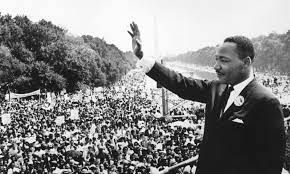
When examining the positive actions and accomplishments of idolized historical figures, it is important to look at their specific contributions and achievements. Some examples of positive actions and accomplishments of these figures include:
- George Washington led the Continental Army to victory in the American Revolution and played a key role in the formation of the United States government as the country’s first president.
- Abraham Lincoln played a key role in the abolition of slavery and preservation of the United States during the Civil War as the 16th President of the United States.
- Martin Luther King Jr. played a key role in the Civil Rights Movement and fought for equal rights for African Americans through peaceful protests and activism.
- Mahatma Gandhi played a key role in India’s independence movement and advocated for non-violent resistance as a means of achieving political and social change.
Commonly Idolized Historical Figures and Their Positive Actions
There are many historical figures who are commonly idolized and have made significant contributions to society. Some examples include:
- Nelson Mandela: He was an anti-apartheid revolutionary, political leader, and philanthropist who served as the President of South Africa from 1994 to 1999. He is celebrated for his role in ending racial segregation and discrimination in South Africa and for his efforts to promote reconciliation and racial harmony.
- Florence Nightingale: She was a British social reformer and statistician, and the founder of modern nursing. She is celebrated for her contributions to the field of nursing and for her efforts to improve the conditions of hospitals and health care during the Crimean War.
- Mother Teresa: She was a Catholic nun and missionary who worked with the poor and sick in India. She is celebrated for her selfless service to the poor and her efforts to promote compassion and charity.
- Malala Yousafzai: She is a Pakistani activist for female education and the youngest Nobel Prize laureate. She is celebrated for her advocacy for girls’ education and women’s rights and for her efforts to promote access to education for girls in developing countries.
These figures have made significant contributions to society and have had a positive impact on the world.
They have demonstrated leadership, courage, and integrity and their contributions continue to inspire people today. Their good deeds have been instrumental in shaping the world we live in today and in making it a better place.
Importance of Acknowledging and Celebrating Their Positive Contributions
Acknowledging and celebrating the positive contributions of idolized historical figures is important for several reasons.
- Preserves and honors the legacy of these figures and the positive impact they had on society.
- Allows us to learn from their examples and to continue to strive for a better world.
- Helps to provide a more complete and nuanced understanding of who these figures were and the impact they had on history. By focusing solely on the negative aspects of a historical figure’s legacy, we risk creating a one-dimensional and incomplete understanding of who they were. Recognizing the positive contributions of these figures allows for a more accurate portrayal of their legacy.
- It can serve as an inspiration for future generations. When people learn about the achievements of these figures and the positive impact they had on society, it can inspire them to make a difference in the world.
- It helps to acknowledge and appreciate the contributions of these figures to the society they lived in, regardless of any negative actions they may have committed, and to remember that they were human and had their flaws.
Acknowledging and celebrating the positive contributions of idolized historical figures is important for preserving their legacy, providing a more complete understanding of who they were, serving as an inspiration for future generations, and appreciating their contributions to society.
The Bad: Negative Actions and Atrocities Committed by Historical Figures
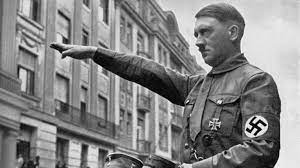
When examining the duality of idolized historical figures, it is also important to understand and acknowledge the negative actions and atrocities that they may have committed. These actions can include actions that were inhumane, unjust, or morally reprehensible, and can include:
- Oppression and mistreatment of marginalized groups such as indigenous peoples and enslaved individuals, as in the case of Christopher Columbus, Thomas Jefferson, and George Washington
- Military conquests and atrocities committed during their reigns, as in the case of Alexander the Great, Napoleon Bonaparte, and Adolf Hitler
- Perpetuating or supporting discriminatory beliefs or policies, such as racism, s3xism, and discrimination against LGBTQ+ individuals
- Human rights violations, war crimes, and crimes against humanity.
It is important to remember that the historical context in which these figures lived in, should be taken into account when evaluating their actions.
However, that does not excuse their actions and it is important to acknowledge and condemn them, even if they were considered acceptable or normal during their time period.
It is important to note that acknowledging the negative actions of these figures does not negate their positive contributions or accomplishments.
Examining the entirety of a historical figure’s legacy, including both the positive and negative aspects, is necessary to gain a more complete understanding of who they were and the impact they had on history.
Commonly Idolized Historical Figures and Their Negative Actions
There are many historical figures who are commonly idolized but have also committed negative actions or atrocities. Some examples include:
- Christopher Columbus: He is often credited with discovering America, but his voyages to the Americas also resulted in the enslavement, rape, and murder of indigenous peoples.
- Thomas Jefferson: He is celebrated as one of the founding fathers of the United States and the author of the Declaration of Independence, but he also owned slaves and played a role in the systemic oppression of enslaved individuals in the United States.
- George Washington: He is celebrated as the first President of the United States, but he also owned slaves and played a role in the systemic oppression of enslaved individuals in the United States.
- Alexander the Great: He is celebrated for his military tactics and conquests but also for the brutality and mass killings of civilians during his campaigns.
- Napoleon Bonaparte: He is celebrated for his military successes, but also for the deaths of thousands of people during his campaigns and for spreading the ideas of nationalism that led to many conflicts and wars.
- Adolf Hitler: He is celebrated by some as a strong leader, but he is responsible for the Holocaust and the deaths of millions of Jews, as well as other minority groups during World War II.
These figures are not just celebrated for their accomplishments but are also remembered for their negative actions, atrocities, and human rights violations. It is important to acknowledge and condemn these actions and to gain a more complete understanding of who they were and the impact they had on history.
Importance of understanding and Acknowledging the Negative Aspects of these Figures
Understanding and acknowledging the negative aspects of idolized historical figures is important for several reasons.
- It helps to provide a more complete and accurate portrayal of who these figures were and the impact they had on history. Ignoring or downplaying the negative aspects of a historical figure’s legacy can lead to a distorted and one-dimensional understanding of who they were.
- It allows for a more critical examination of the actions and beliefs of these figures. By acknowledging the negative aspects of their legacy, we are able to better understand the context in which they lived and the societal and cultural influences that may have shaped their actions.
- It helps us to learn from the past and to avoid repeating the mistakes of the past. By understanding and acknowledging the negative aspects of these figures, we can gain a better understanding of the historical roots of current societal issues and work to address them.
- It helps to honor and acknowledge the victims of these figures’ actions and atrocities. Recognizing the harm that was caused by these figures’ actions is a way of showing respect and empathy towards the victims and their families.
Understanding and acknowledging the negative aspects of idolized historical figures is important for gaining a more complete and accurate understanding of who they were, for learning from the past, for honoring and acknowledging the victims, and for promoting a more critical examination of history.
The Ugly: Morally Reprehensible Actions and Beliefs of Historical Figures
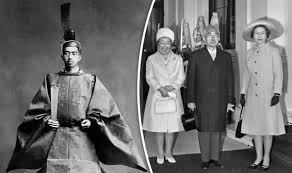
When examining the duality of idolized historical figures, it is also important to understand and acknowledge the morally reprehensible actions and beliefs that they may have held. These actions and beliefs can include:
- Perpetuating or supporting discriminatory beliefs or policies, such as racism, s3xism, and discrimination against LGBTQ+ individuals.
- Advocating for or participating in violence and oppression towards marginalized groups, such as enslaved individuals or minority ethnic groups.
- Perpetuating or supporting unjust social, economic or political systems, such as feudalism or apartheid.
- Holding or promoting ideologies that justify the persecution or extermination of certain groups of people, such as fascism or Nazism.
These actions and beliefs are morally reprehensible because they violate basic human rights and dignity, and they are in direct opposition to the principles of justice, equality, and human dignity.
Commonly Idolized Historical Figures and their Morally Reprehensible Actions
There are many historical figures who are commonly idolized but have also committed morally reprehensible actions or held morally reprehensible beliefs. Some examples include:
- King Leopold II of Belgium: He is celebrated by some for his role in the development of Belgium, but he also played a key role in the colonization and exploitation of the Congo, leading to the deaths of millions of Congolese through forced labor, starvation, and disease.
- Andrew Jackson: He is celebrated as the 7th President of the United States and a hero of the War of 1812, but he also played a key role in the forced removal of Native American populations from their lands through the Indian Removal Act, leading to the deaths of thousands of Indigenous people.
- General Augusto Pinochet: He is celebrated by some as a hero of Chile, but he was responsible for human rights violations, including torture, killings and forced disappearances during his regime.
- Emperor Hirohito of Japan: He is celebrated as a symbol of Japanese culture and tradition, but he also held extremist nationalist beliefs and played a key role in Japan’s aggressive expansion and war crimes during World War II.
Importance of Recognizing and Condemning These Morally Reprehensible Actions
Recognizing and condemning the morally reprehensible actions of idolized historical figures is important for several reasons.
- It helps to uphold and promote moral and ethical standards. By recognizing and condemning morally reprehensible actions, we are able to hold individuals and societies accountable for their actions and ensure that they are not repeated.
- It helps to protect the rights and dignity of marginalized and oppressed groups. By recognizing and condemning morally reprehensible actions, we are able to acknowledge the harm that was caused and work to address and rectify it.
- It helps to promote a culture of accountability and responsibility. Recognizing and condemning morally reprehensible actions is an important step towards taking responsibility for our actions and creating a more just and equitable society.
- It helps to promote historical accuracy and understanding. By recognizing and condemning morally reprehensible actions, we can gain a more complete understanding of the historical context and the societal and cultural influences that may have shaped these actions.
Recognizing and condemning the morally reprehensible actions of idolized historical figures is important for upholding moral and ethical standards, protecting the rights and dignity of marginalized groups, promoting a culture of accountability and responsibility, and promoting historical accuracy and understanding.
Importance of Examining the Entirety of an Historical Figure’s Legacy
Examining the entirety of a historical figure’s legacy, including both the positive and negative aspects, is important because it helps to provide a more complete and accurate portrayal of who these figures were and the impact they had on history.
It allows for a more nuanced understanding of their actions and beliefs, and helps us to learn from the past and avoid repeating the mistakes of the past.
It also allows us to acknowledge both their accomplishments and the harm they caused, and to hold them accountable for their actions. This examination should be done in a historical context and with a critical perspective.



